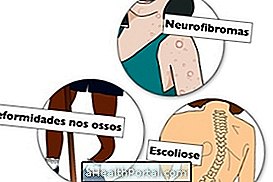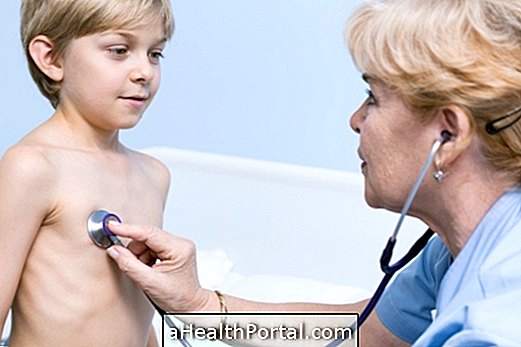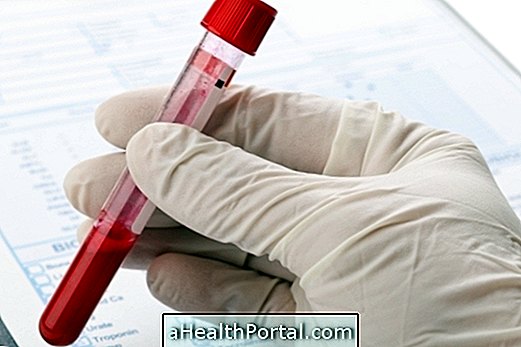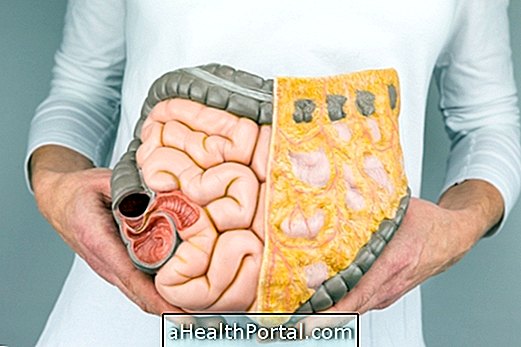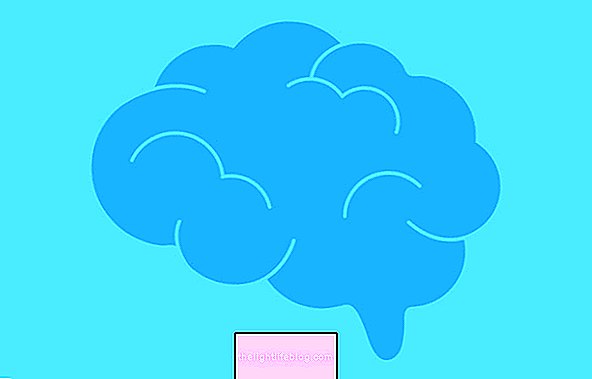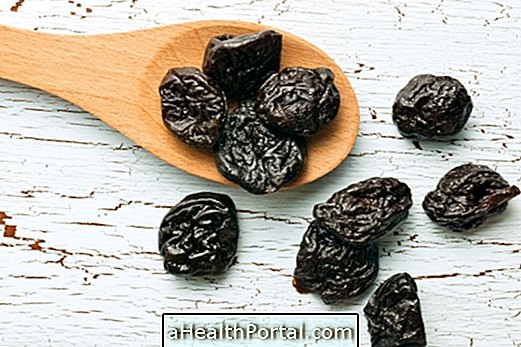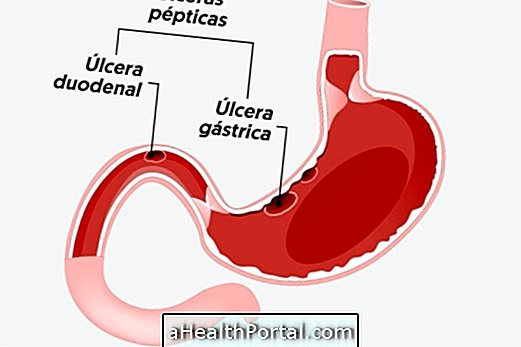The main causes of back pain may include spine problems, pneumonia or kidney stone, and to differentiate the cause one should note the characteristic of the pain and the region of the back that is affected.
Most often back pain is of muscular origin and arises due to tiredness, lifting weights or poor posture, and can be solved with simple measures like hot compresses and stretches.
However, if the pain comes on suddenly; if the back pain is very strong or if there are other associated symptoms such as fever or difficulty moving around it is advised to go to the doctor to have it examined and indicate the necessary treatment.
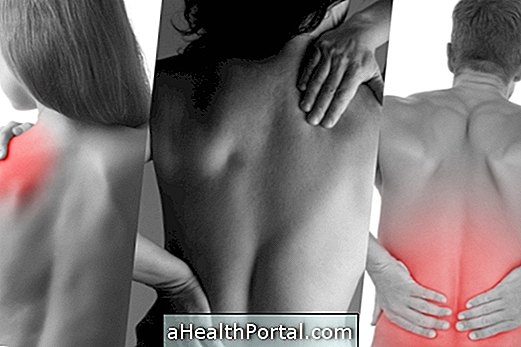
What can be back pain
The 7 main types of back pain are:
1. Back pain on the right or left side
- What it can be: It is usually a pain in the form of weight that indicates the presence of a muscle injury, especially after the gym, for example. In addition, back pain can also be caused by demanding professions for the back as is the case with the dentist or gardener, for example. Learn about other problems that can be caused by working on Treating the 5 Illnesses that may arise in the Workplace.
- How to relieve: Put a warm compress on the area for 15 minutes, twice a day for at least 3 to 4 days and apply an anti-inflammatory ointment, such as Cataflam or Traumeel, for example.
2. Back pain when breathing
- What it may be: It may be related to the lungs when there is a feeling of shortness of breath, especially when there has been a respiratory illness in recent times or if you are bedridden. See other signs in: Symptoms of lung infection.
- How to relieve: Apply a warm compress in the area, but it is best to seek a pneumologist if there are other symptoms of respiratory problems, such as cough, catarrh or fever.
3. Back and kidney pain
- What it can be: usually it is a sign of renal colic, being related to the presence of kidney stone that results in a very severe pain that prevents the patient from walking or moving, for example. More details of this pain in: Symptoms of kidney stones.
- How to relieve: The pain should be treated as soon as possible in the emergency room.
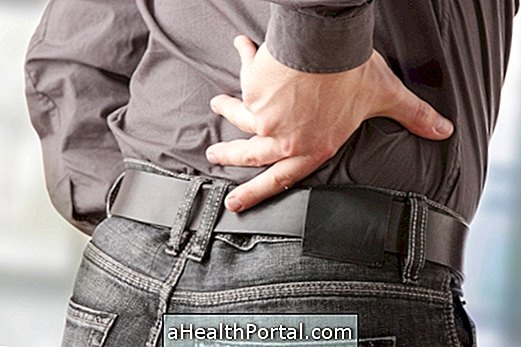
4. Back pain radiating to the legs
- What it can be: It can be caused by a sciatic nerve squeezing in the end of the spine or buttocks, when it causes stabbing pain with tingling sensation or difficulty sitting or walking, and may indicate parrot beaks. If you think you may have the sciatic nerve affected, answer the following questions:
- 1. Pain in tingling, numbness or shock in the spine, gluteal, leg or sole of the foot. Yes No
- 2. Burning sensation, cracked or tired leg. Yes No
- 3. Weakness in one or both legs. Yes No
- 4. Pain that gets worse by staying too long. Yes No
- 5. Difficulty walking or staying too long in the same position. Yes No

- How to relieve: what is recommended to do in these cases is to seek an orthopaedist so that he can request tests, such as resonance, and indicate the best treatment.
5. Back pain with chest tightness
- What can be: When the pain gets worse with exertion and there is feeling discomfort or nausea can be a sign of heart attack, especially if the individual is overweight, has high blood pressure or high cholesterol.
- What to do: You should call medical help by calling 192 as soon as possible.
In addition, the onset of back pain in pregnancy is also very common, especially in the last months of pregnancy due to overloading of the spine. Here's how you can avoid and treat: How to relieve back pain in pregnancy.
6. Pain in the middle of the back
- What may be: Muscle contracture or spinal problems, including herniated disc, that affects people over 45 years of age. The pain may worsen when you lift or stay too long in the same position, and may even radiate to the side, ribs or down, affecting the buttocks or legs.
- What to do: You can put a warm compress on your back and avoid staying too long in the same position. In addition you can also go to the orthopedist for him to request an X-ray or Resonance, and indicate the treatment, which may include physiotherapy.
7. Pain in the upper back
- What it can be: It can be muscle contraction, due to tiredness, excess of physical activity or worry or torticollis, but in this case there must also be pain in the neck.
- What to do: Stretching exercises are a great help to stretch your muscles and feel more relaxed. Staying in a comfortable position and turning your head slowly to all sides can help you relax the muscles at the top. See more stretches you can do to feel better.
How To Relieve Back Pain
What you can do to relieve back pain at home before your doctor's appointment includes:
- Rest : lie on the floor or on a hard mattress for half an hour, every day;
- Warm Compresses : Place a warm compress with 3 drops of rosemary essential oil just over the pain site for 15 minutes a day;
- Receive a massage : with warm almond oil, but without forcing too much;
- Homeopathy : ingestion of homeopathic remedies, such as Homeoflan or Arnica Prépós, from Almeida Prado, prescribed by the doctor to treat inflammations in the back;
- Pilates exercises : help strengthen the muscles of the back and abdominals, fighting the cause of the pain. Here are 5 exercises you can do at home to feel better.
In addition, it is important to follow some advice, such as adopting good posture in the day to day to protect the spine and exercise regularly. Bodybuilding is a good exercise to improve posture, decreasing pain. Learn more tips on: What to do when back pain does not go away.
See other tips for relieving back pain:
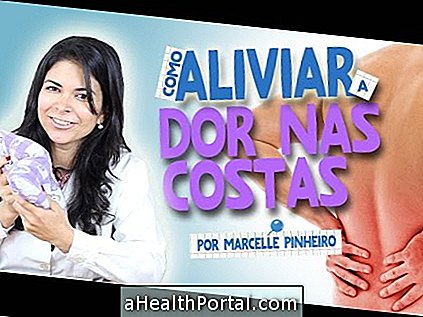
When to go to the doctor
It is advisable to seek a general practitioner when the back pain is very strong, appears suddenly or is accompanied by other symptoms such as nausea or shortness of breath.
In these cases, it is recommended to consult a general practitioner for tests, identify the cause and initiate the most appropriate treatment, which may include the use of analgesics such as Paracetamol, anti-inflammatories such as Ibuprofen, or surgery to treat problems in the such as a herniated disc.
During the consultation it is important to tell the doctor the characteristics of your pain, telling you when it has come up, whether it hurts all the time or only when it makes a certain movement, and also what you have done to try to relieve the pain. It may be helpful to tell the doctor if you are sedentary and what your job is. By knowing these details the doctor can make the diagnosis faster and indicate the best treatment.
See what to tell the doctor at the appointment to make the diagnosis easier.


